With more portable power stations hitting the market, many offer a UPS mode to keep your equipment operational through outages. With traditional companies such as Eaton or APC being the usual suspects for a home or business UPS, seeing how these new portable power stations perform in this category has been a point of interest. With the Quarch Mains Power Analysis in our lab, we see how units from Bluetti, EcoFlow, and Ugreen compete against an Eaton 5PX.
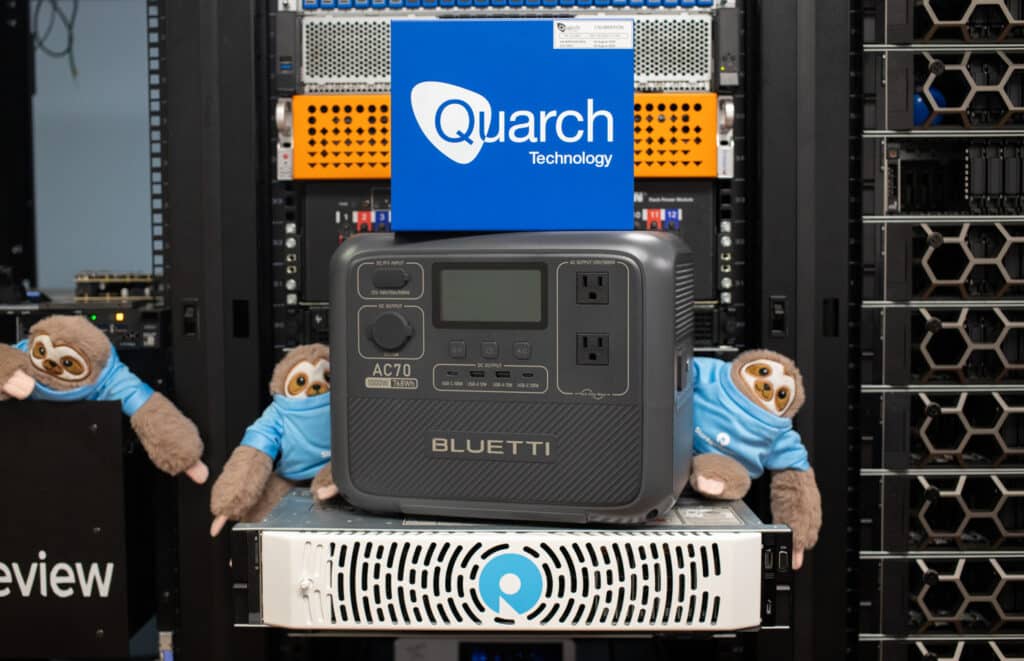
UPS Basics Explained
When shopping for a UPS there are a few features that differentiate models. These can include battery chemistry, battery capacity, inverter size, and the output waveform. Many of the affordable consumer UPS models offer low-capacity lead-acid batteries with square-wave output inverters, with models at the other side of the spectrum offering lithium-ion batteries and pure-sinewave inverters.
If you follow the portable power station category in general, almost all offer relatively huge lithium-ion batteries, as well as pure sinewave inverters already. With onboard fast chargers, it’s not hard to see how much in common these units have with a traditional UPS.
With the components being quite similar, not all of these units are made equally when it comes to how fast they can operate during an outage. The time it takes the UPS to switch from AC to battery output, or transfer time, is the difference between your computer staying online or rebooting during an outage.
The baseline to compare against would be an Eaton UPS which most with between 2-6ms, with a maximum of 10ms. This figure has to be less than the “hold-up time” of your computer’s power supply, which is how long it can work disconnected from AC power.
For many portable power stations we review, we have historically recommended users still leverage a proper UPS for protecting systems from outages. Many portable power stations list long transfer times, which exceed what many PSUs can support. A quick rundown of times from the companies we’ve reviewed are listed below:
- EcoFlow: less than 30ms
- Bluetti: less than 20ms
- Ugreen: less than 20ms
As you can see, many of these are far exceeding the less than 10ms of the Eaton UPS worst-case, so we decided to measure all of them under the same condition.
UPS Testing Methodology
Leveraging our recent Tyan AMD EPYC Gen4 workstation at idle, we looked at the cutover time of each portable power station, and if the system stayed operational. In terms of methodology, we look at the logged 125us output from our Quarch power analysis module, focusing on voltage, current and RMS current. This output shows us exactly when the AC waveform drops and when the AC current picks back up to send to the computer power supply. It also gives visibility into how quickly each system returns to stable output. To help show the right scale visual for each portable power station in UPS mode, we show three cycles of AC on grid power, the cutover, and three additional cycles onto inverter power.
Eaton 5PX G2 1000W
To start with our baseline of probably one of the best dedicated UPS units on the market, we lead with the Eaton 5PX G2 1000W UPS. This model is one of our favorite UPSs on the market and is offered in a wide range of capacity options. Eaton lists the transfer speed of less than 10ms on this model. In our test environment, we measured a transfer speed switching from AC to battery power in just 8.6ms.
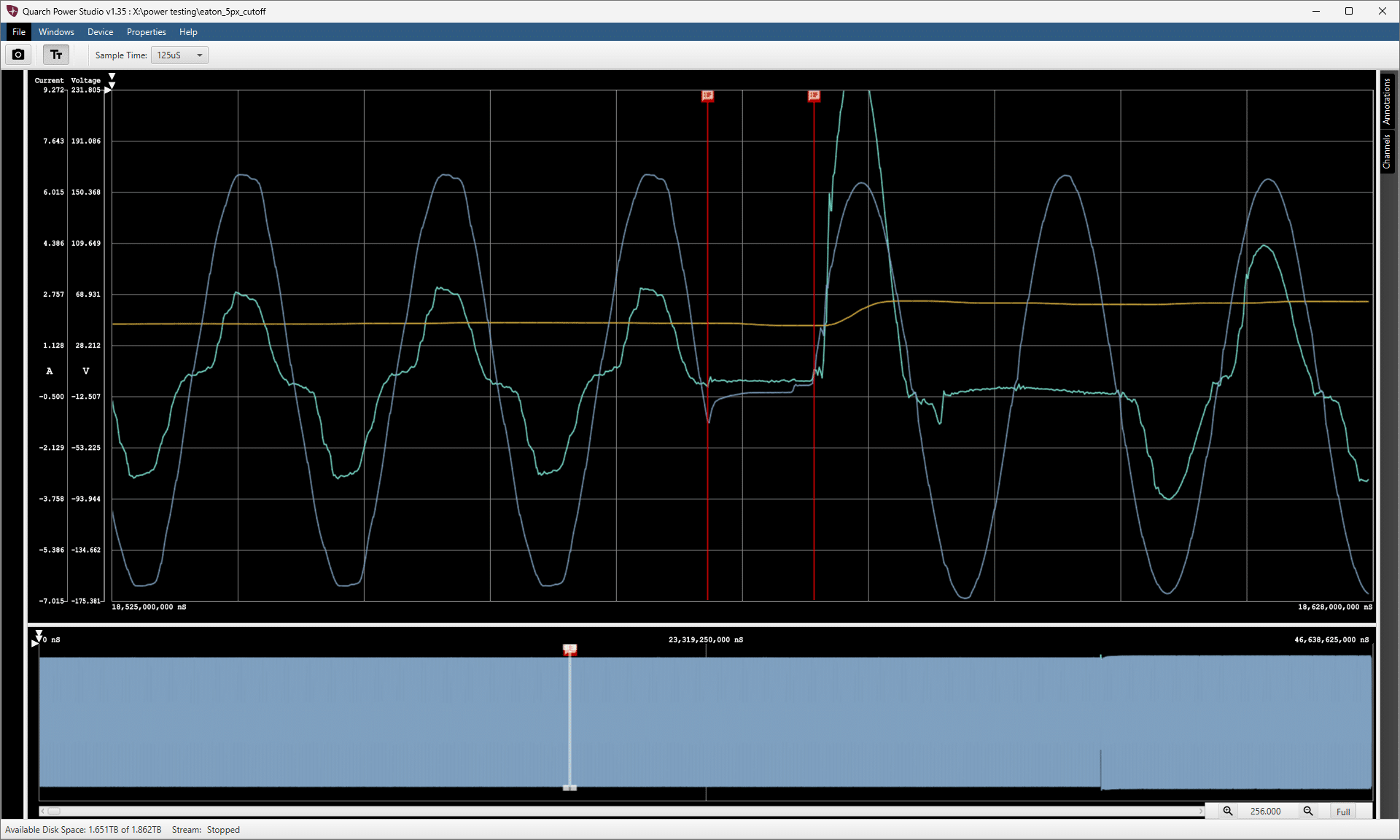
Bluetti AC60
The new Bluetti AC60 passed the cutover test and did quite well, keeping power up through the transfer process. We measured its transfer time at about 13.8ms. It took about half of a cycle to produce its first nearly complete waveform, and just over 3 cycles to resume to a clean sinewave output. It was able to stabilize to a clean AC sinewave form in maybe a hair of its first sine wave.
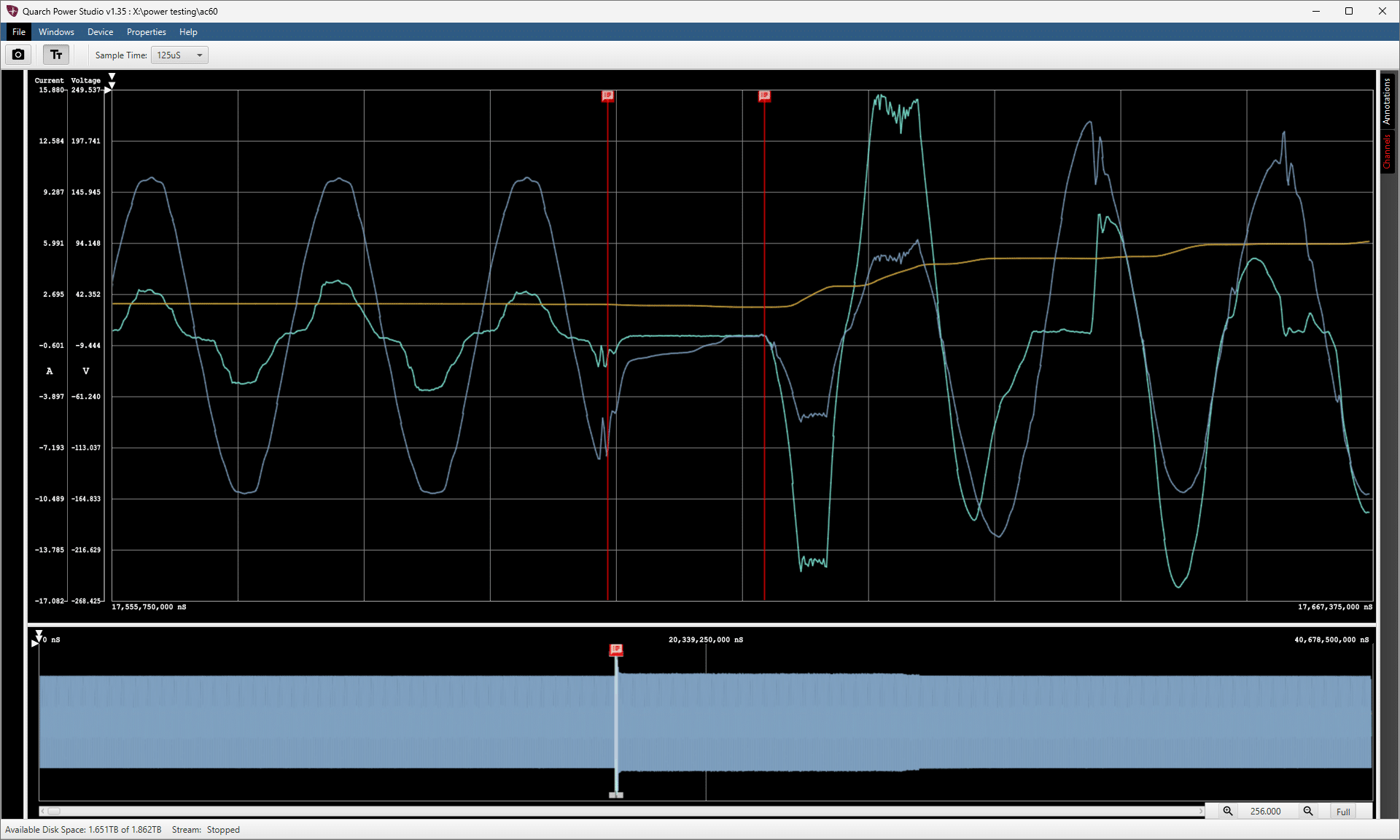
Bluetti AC70
The Bluetti AC70 performed nearly identical to the AC60 with a transfer time of about 14ms. One area it did have a leg up on the AC60 though, was how quickly it was able to return to a clean sinewave AC output. Here it took only one cycle to get back to a clean output.
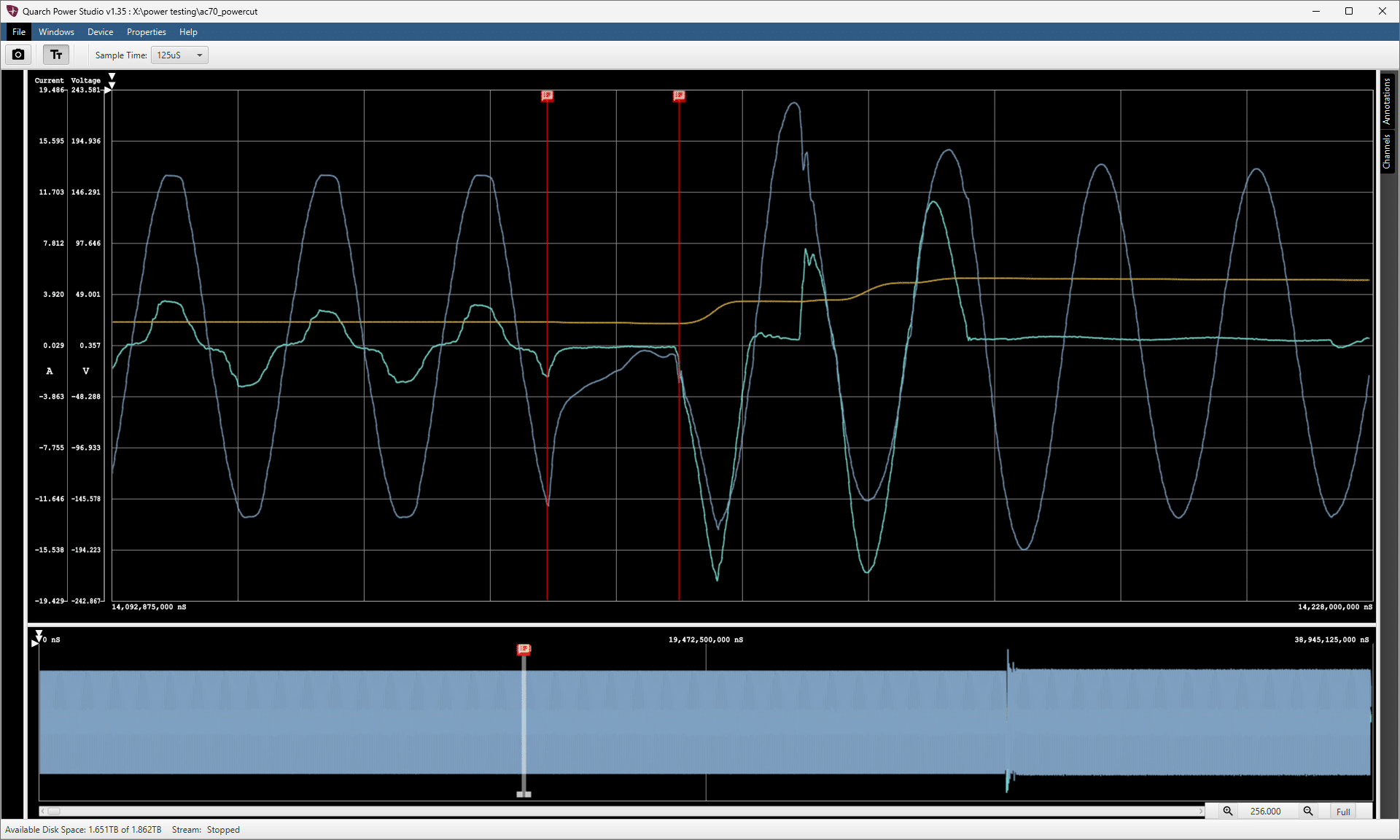
EcoFlow Delta 2
EcoFlow has one of the higher-listed UPS transfer times with the Delta 2 out of the models we’ve reviewed. I’ll start by saying it passed the test with our Tyan workstation, but just barely. We measured a transfer time of about 38.5ms, which is really pushing it for computer power supplies. Looking at its inverter output transitioning to battery power, its first two cycles of AC power took a larger brunt to resume to clean sinewave output. After that initial burst though it was very clean on its subsequent cycles.
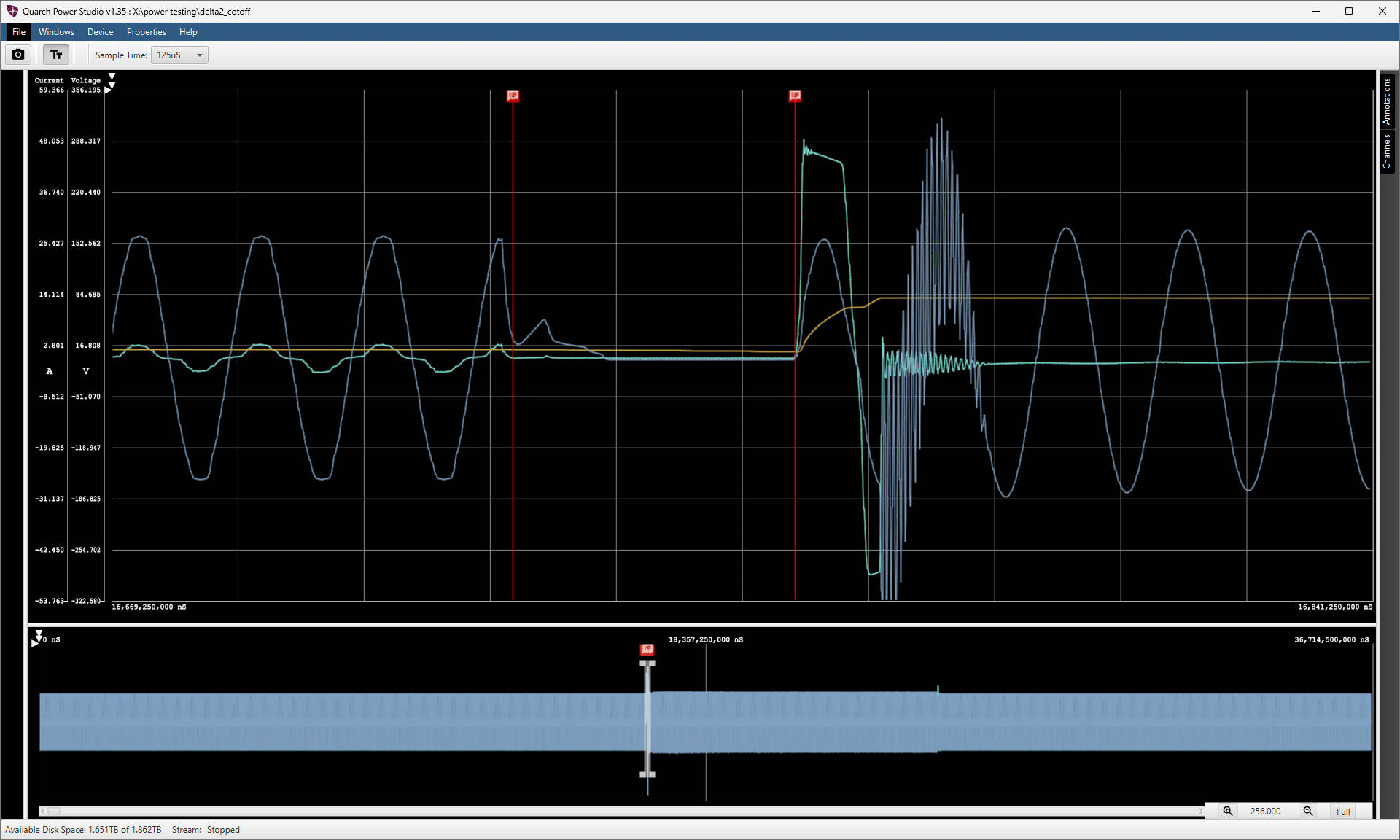
Ugreen PowerRoam 1200
The Ugreen PowerRoam 1200 lists the same less than 20ms transfer speed as Bluetti. In our test, we measured its actual time of around 15.3ms, with one of the quickest returns to clean sinewave AC output in a half cycle.
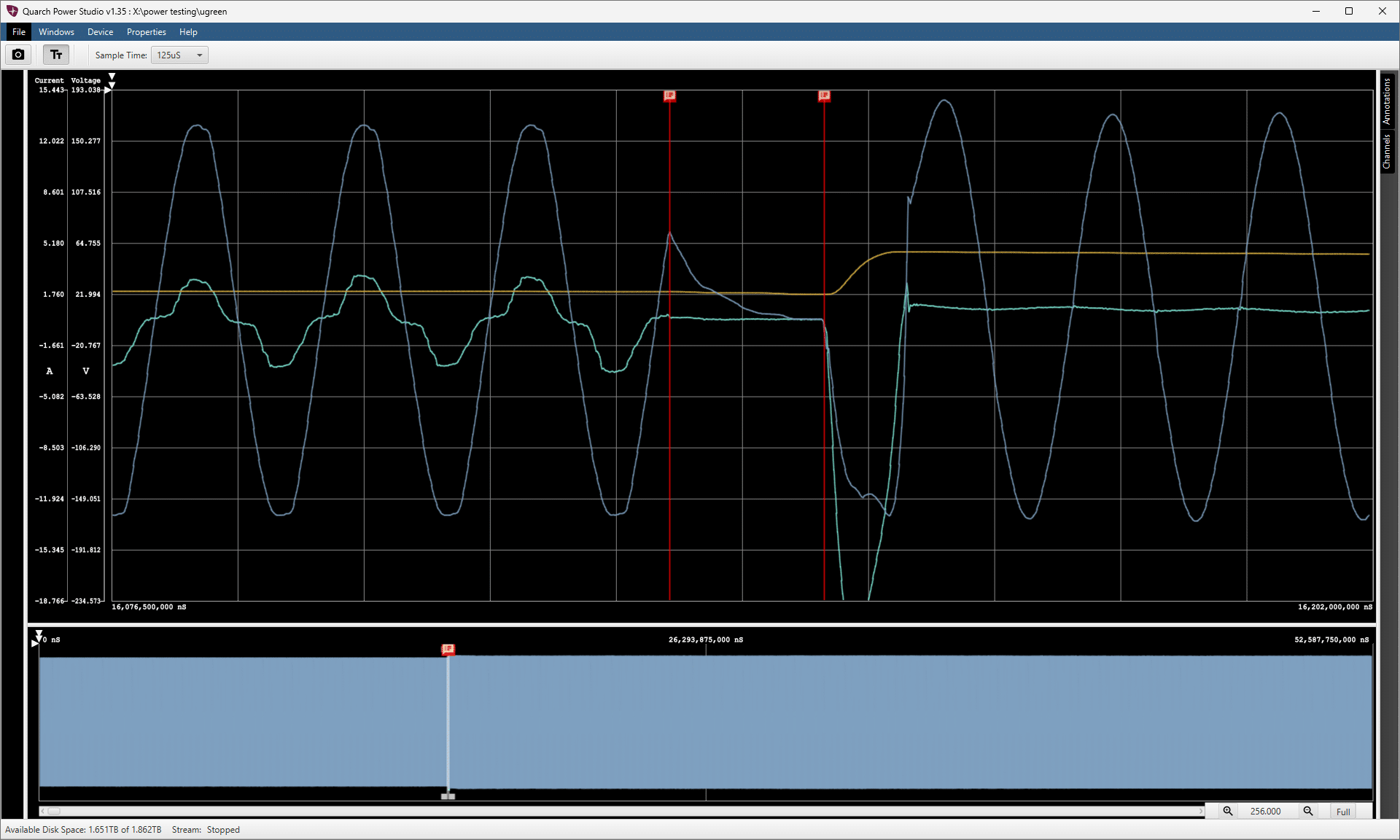
Jackery Explorer 2000 Plus
When testing the Jackery Explorer 2000 Plus, they didn’t have a listed transfer speed to compare to, but in our testing, it stacked up quite well. We measured a transfer time of just 8.7ms, which is one of the fastest in this group.
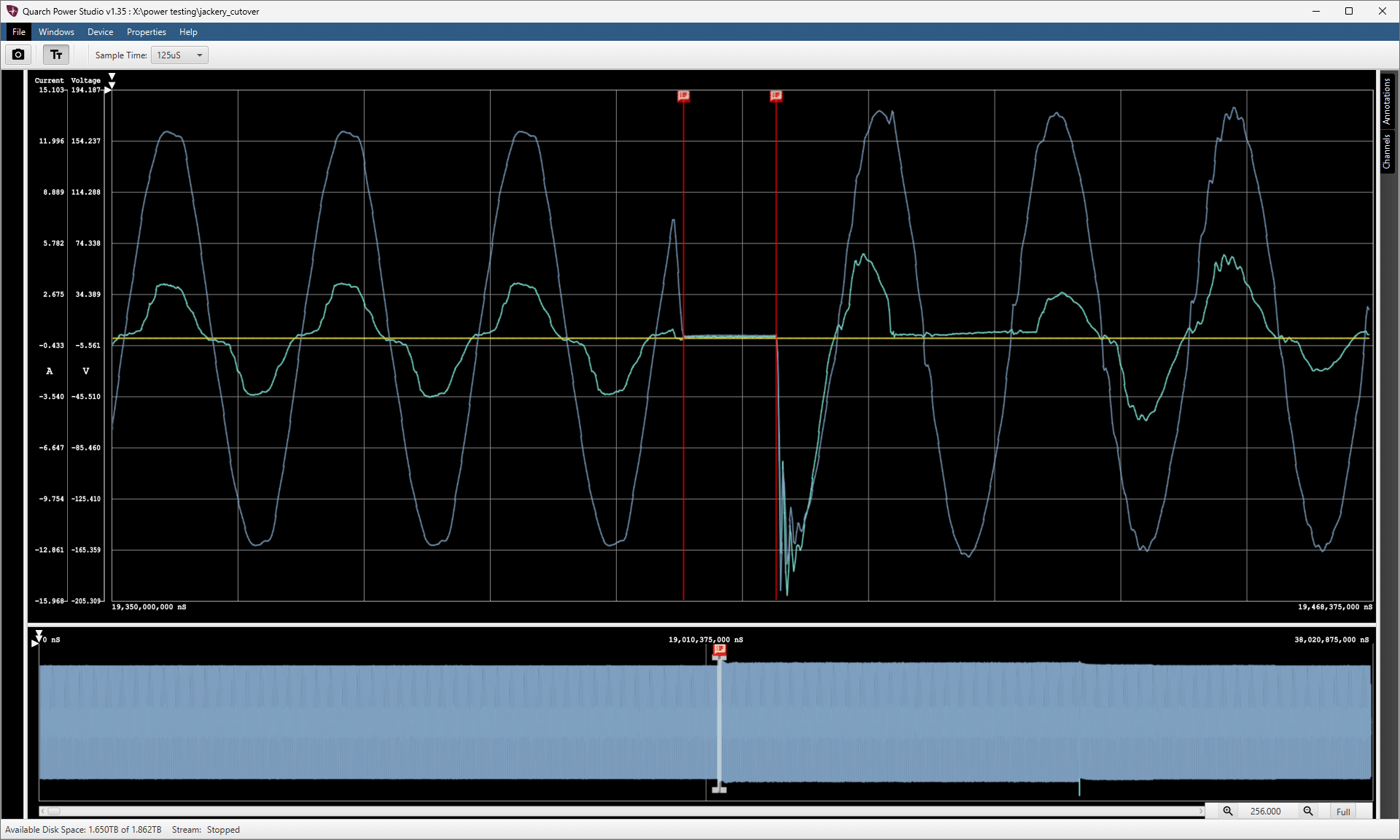
Anker SOLIX F2000
On the Anker SOLID F2000, they list a 20ms transfer time, although in our testing it showed one of the longer cut-over periods. From the point where the AC wave-form fell off to when AC-current started to ramp up again, it was around 27.4ms. It was able to recover in about one half-cycle of AC.
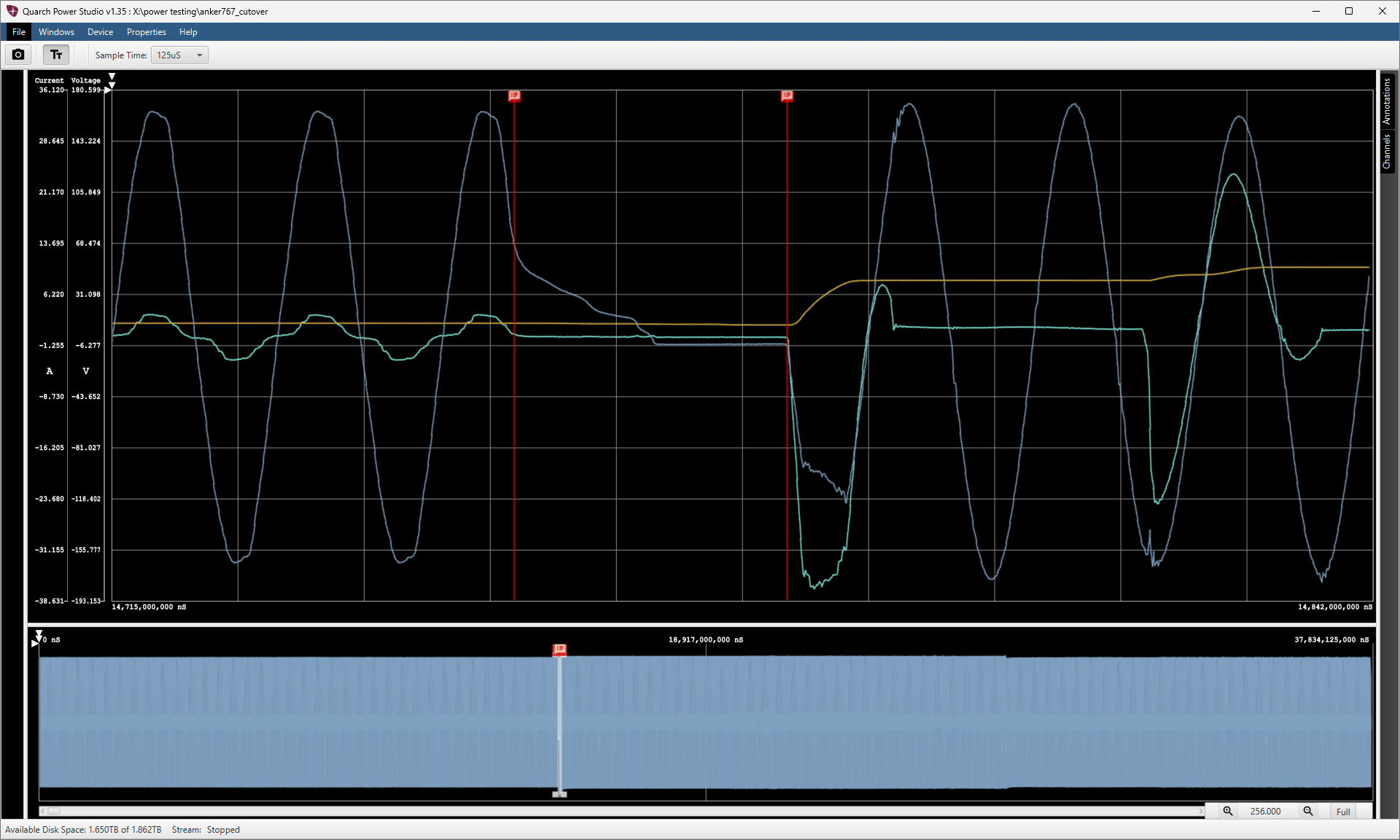
Conclusion
Expect to see the more power testing across our reviews going forward. The inclusion of UPS transfer times is invaluable to bring into our Portable Power Station reviews as while many vendors don’t lead with that capability, it’s great to know how the unit would operate if put into that situation. While we saw that certain models excelled more than others at the UPS functionality, passed the test in terms of keeping our workstation online when power was cut.
We end this by saying that results will vary. The power supply in our Tyan workstation is incredibly overbuilt and managed to stay online through an almost 40ms transfer time. Many desktops are designed with a 16ms holdup time as a minimum spec.
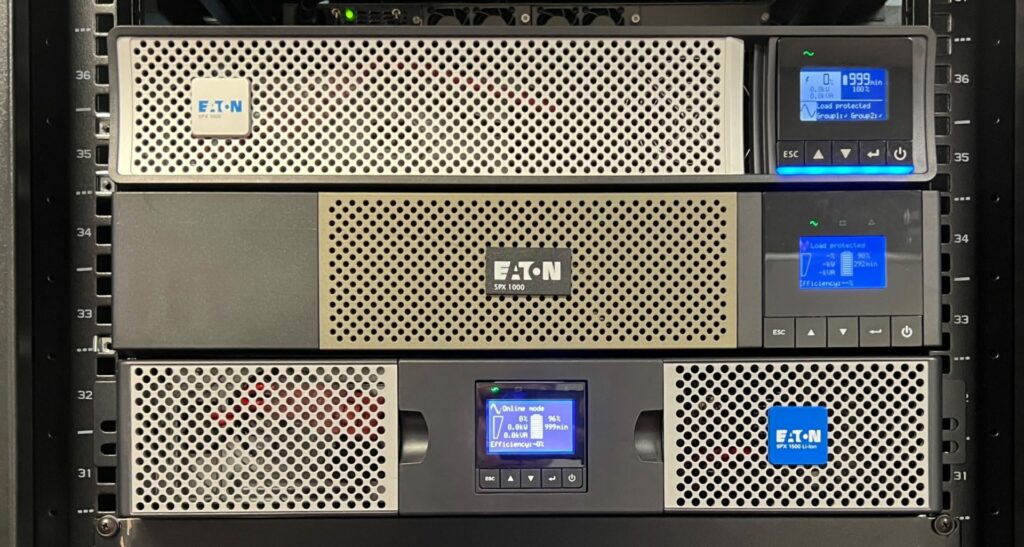
Across the board the Eaton 5PX G2 UPS far exceeded the capabilities of the Portable Power Stations we tested in UPS mode, meaning it will work for pretty much any desktop you can throw at it. For others that push into the 13-16ms you should test your devices first before relying on it in an outage situation. For the EcoFlow Delta 2 with a 38.5ms transfer time, it might be best to keep sensitive equipment behind a normal UPS.




 Amazon
Amazon